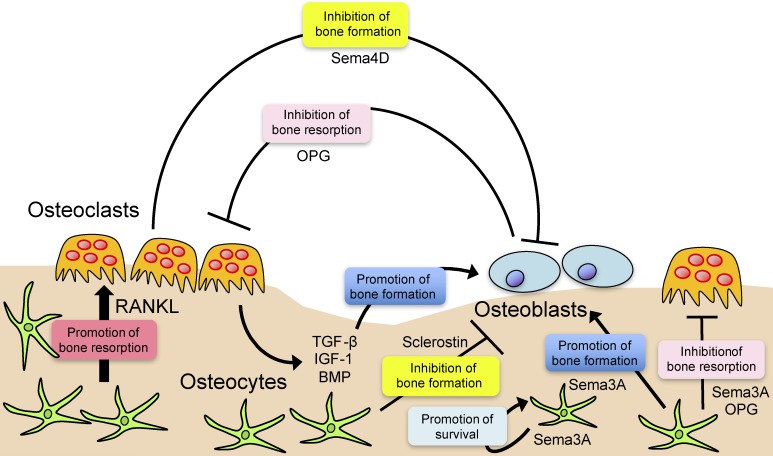Figure 5.
(Color online) Bone cell communication. Bone cells secrete factors that modulate bone resorption and formation. Osteoclast formation is induced by RANKL, which is secreted from osteoblastic cells, including osteocytes. Osteoblastic cells produce OPG, a decoy receptor for RANKL, in order to inhibit osteoclastic bone resorption. Osteoclasts inhibit bone formation through the production of Sema4D. TGF-β, IGF-1 and bone morphogenetic protein (BMP) are positive regulators of bone formation stored in the bone matrix that are released as soluble factors by osteoclastic bone resorption. Sema3A produced by osteocytes contributes to bone homeostasis by autoregulation of osteocyte survival in addition to osteoclast suppression and osteoblast stimulation. Osteocytes produce sclerostin, a potent inhibitor of osteoblastic bone formation.

